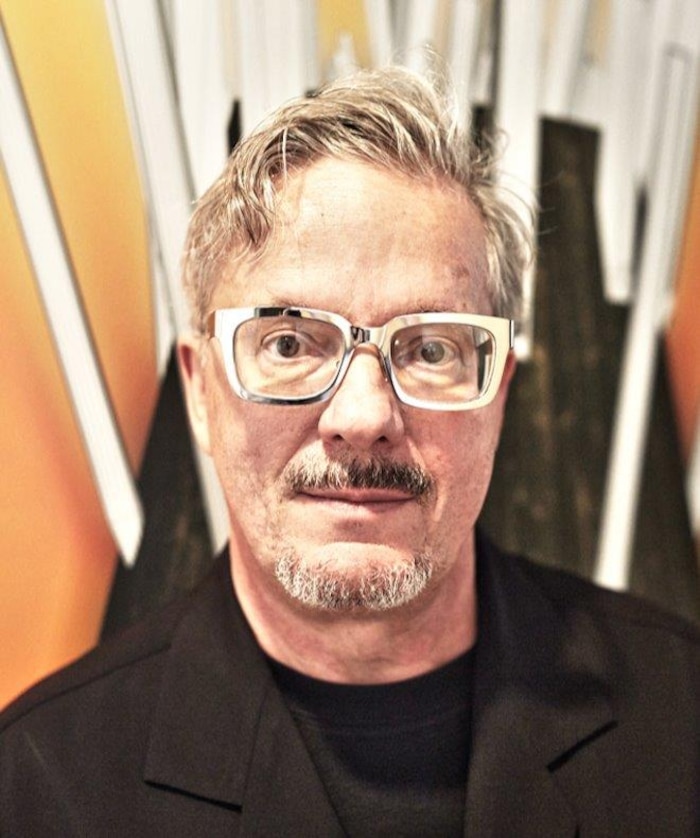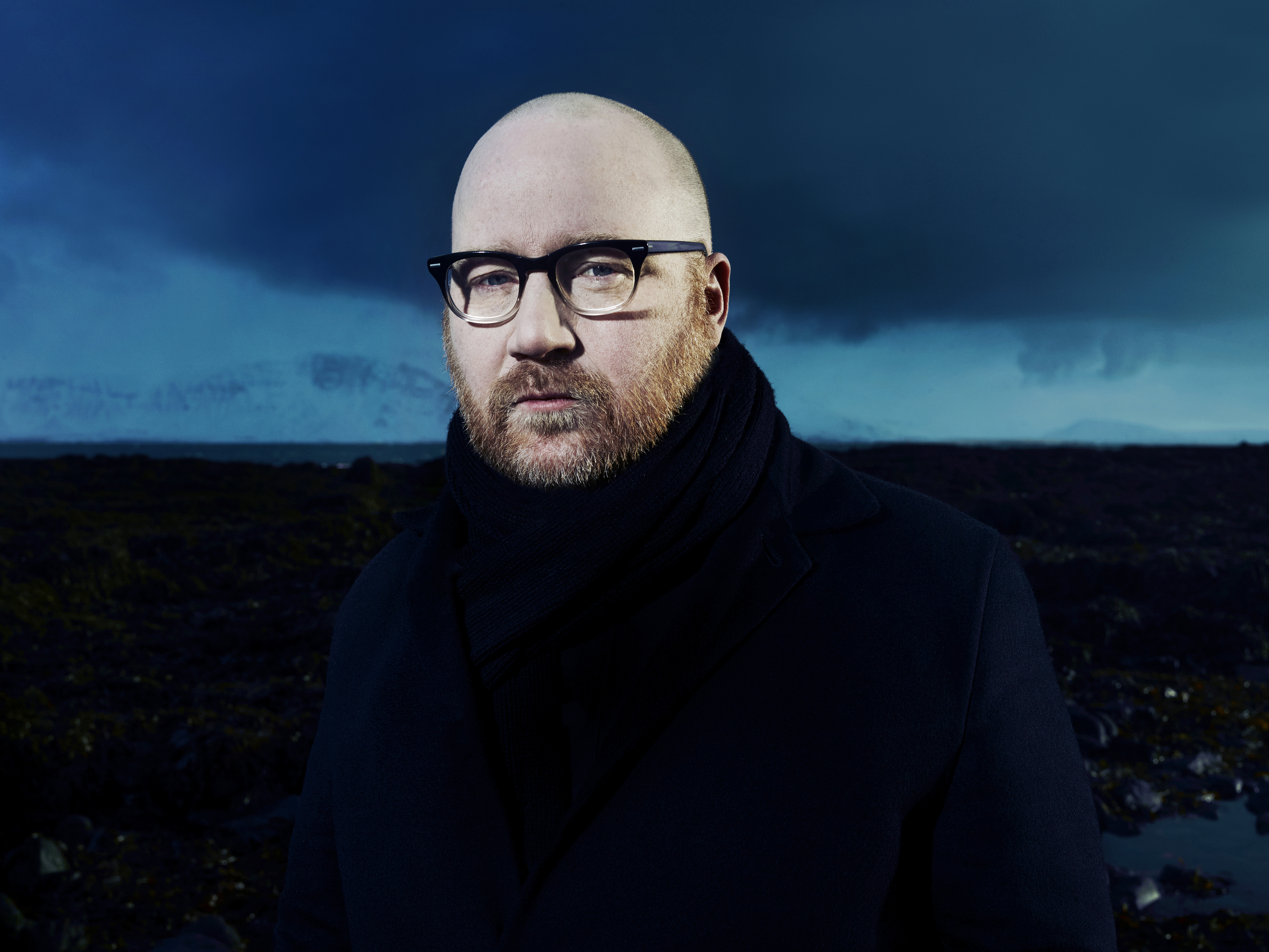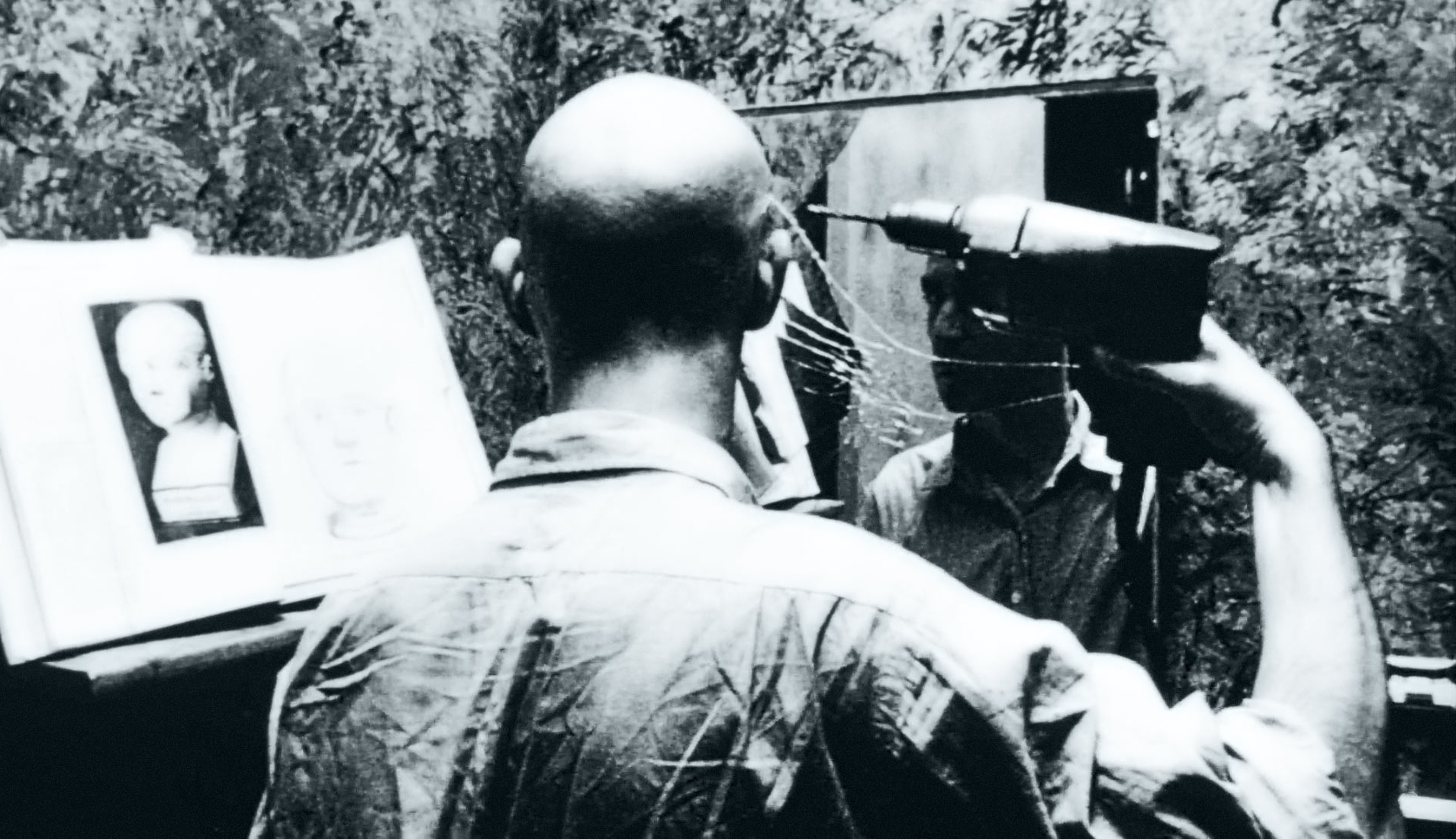Interview: Mark Mothersbaugh
The Devo don discusses his second and third careers making music for film and television, and creating politically-charged art
While most known for his work with Devo, Mark Mothersbaugh has since made a prolific career as a composer, record producer and visual artist. In this excerpt from his appearance on Red Bull Radio’s Peak Time with Harley Brown, Mothersbaugh discusses his and his brother Jim’s early musical experimentation, a self-made contraption called the “orchestrion,” working with Wes Anderson and his gradual transition into the art world.

Drawing Trees
It’s quite common even in first world countries for kids to go undiagnosed as not being able to see, because your other senses kind of compensate for things. In defense of my parents, there were five kids in my family. I got through second grade and didn’t know anything was wrong but I did know that the other kids always seemed to know the answers to “Read the numbers on the board,” or something like that. I’d make a joke and get spanked, because corporal punishment was big in those days, or [be] put in the corner or something. I always wondered how kids knew the right answers.
They realized I had the textbook about two inches away from my nose when I was learning how to read – that was the clue. I came out of the optometrist office and the world had changed. It was kind of like in The Wizard of Oz when the film goes from black and white to color, all these things that I’d never seen before became visible in a split second. I got in my dad’s car, which I saw for the first time, and we drove over a hill and I saw my school that I had been going to for two years for the first time. I saw the woods I used to walk through every day for the first time. We lived in a housing development, so I saw hundreds of houses that were all identical, but they all had roofs. I’d never seen the roof before. They all had chimneys that smoke was coming out of and there were clouds in the sky. I’d never seen a cloud before and I’d never seen the sun and I’d never seen birds or telephone wires. I was really impressed with trees. I’d never seen the top part – I only knew the bottom part [because] you could get a couple inches away from it and look at it really close.
It was this electrifying moment in my life, the first time a school teacher had ever said anything nice to me.
The next day I was at school and I was drawing trees because they were fresh in my mind. My school teacher, Mrs. Savory, had spanked me a number of times, had put me in the corner, called me a dunce and disruptive. She thought I was a jerk and sent me to the office for discipline. She saw me sitting there with these pair of glasses that looked like they had Coca-Cola bottles for lenses. Back in those days you had to have really thick lenses to correct things. She said, “You draw trees better than me.” It was this electrifying moment in my life, the first time a school teacher had ever said anything nice to me. I went home that night and dreamt I was going to be an artist.
After we were out of high school and we were in a band together, I told my brother that story and he told me a story of when he was in junior high, it was the opposite of [mine]. He had drawn something he was really proud of and an art teacher came up and said, “No. You know what you did wrong? The perspective on this house, you’ve got...” and he started drawing over top of my brother’s drawing. It made him so upset, he just crumpled it up and threw it in the trash and he said he’d never do another drawing, ever, after that.
Jim Mothersbaugh
My younger brother Jim was the first drummer in Devo. We thought we were an art movement. We thought we were going to spread the good news of things falling apart and comment on what we saw as evidence of the unnatural state of humans on the planet, and the devolved activities of human beings. We were looking for sounds because we were already kinda bored with rock & roll, which was popular music, but we didn’t want to be a band anyhow. We wanted to be more like a theater group.
Jim found a love in electronics, and I asked him to help me figure out how to get V-2 rockets and mortar blasts and ray guns and hypnotic kicking noises and factory sounds. He built a drum kit – I can’t say that it was the first electronic drum kit, I’m sure there were probably other people experimenting with that stuff – but he built a full kit. He had a day job at a muffler shop and he built it out of tailpipes that were bent into the shape of a framework that he could mount practice drum heads on that were just little, flat, rubbery things that you could play and they wouldn’t make a sound. He got a full set of those and then attached acoustic guitar pickups to it and then ran those into the things that guitar players would run their guitar into, like fuzz tones and Echoplexes and wah-wah pedals and ring modulators.
It was the most incredible sound. If you listen to Devo recordings from that era, like our first film The Truth About De-Evolution, you get an idea of what it was like when it was tamed in a recording studio, but when we played on stage he was like a monster. An electronic, outer-space caveman or something. It was pretty amazing.
Orchestrions
Orchestrions has toured I think five museums now. The people that work there, they’re not sure what they think of it at first, and they all tell me they miss it when it comes down at the end of the show in their museum. It plays about 15 or 20 different songs I wrote over the course of the day. It takes about two and a half hours or something to make a loop before it starts playing from the top again.
I got the idea [when] I was in New York City. Wes Anderson was asking me to write a few pieces of music for Moonrise Kingdom. He gave me footage of these kids that had just escaped from camp, the boy and girl, and they were running away together. The camera was way up in the air and it was shooting through these trees that were being blown in the wind and you saw birds flying all around. He didn’t record sound because it wouldn’t have been very useful, just loud whooshing noises and birds and stuff in the way.
I’ve collected odd and eccentric sounds and noisemakers for 35 or 40 years now, and I have a collection of about 250 bird calls. Some of them are like 150 years old. I started playing some bird calls while I was looking at the footage, then I recorded and started making melodic and rhythmic progressions out of the bird calls. I was trying to do it by myself, but it was too hard to sit in a room with 50 bird calls on a table and pick them up at the right time and play them at the right time. In the process of buying a lot of vintage musical instruments, I met this guy that repaired amusement park calliopes and I said, “What would you do if you were trying to make bird calls play?” He goes, “Oh, that’s easy.”
We started working with an air compressor, so I used an old foghorn to pump air into these bird calls. Some of them you had to blow air through and some of them it was just like a little pouch and I had to build something that tapped the pouch and made a “peep-peep-peep” sound. Some of them needed something shook or a crank turned to make the bird call sound. They all had different little mechanisms to them. Over five years or so we built that thing and I started writing music for it. It was really enjoyable. I’m always sensitive to doing something where I feel like it’s a cliché or that it’s something I’ve already done. I’m always looking for new things.
So, by using bird calls and orphaned organ pipes, I could create this instrument that didn’t have all the notes and wasn’t tuned perfectly across the scale. A lot of the tuning on the pipes was varied. I love that sound of things that you get when you play two notes that are slightly out of tune with each other. There’s a beating. It’s not perfect. It’s kind of more like a gamelan instrument, where they clang and it makes spirits come to life instead of being just this dead, western, bloodless, beautiful, classical-based music.
I’m building more orchestrions. They’re all different from each other. They’re all unique in some way. I find different things like foghorns and sirens, or scratching sounds or tubular bells or things that weren’t in the last one I had done before. Although I have to say, most feature films don’t request that.
It seemed like almost every single person that you did that to had one cuter, youthful side and a not so pretty, more evil side. I was just fascinated with the lack of symmetry in humans when I was making those.
Wes Anderson
20 years ago I was writing [music for] films and TV shows and I was avoiding incorporating computers into my artwork because I thought, “Oh God, I’ll get really sucked into computers and I’m already a slave to them in the music world.” But as soon as I found out about Photoshop I started making these mutants. I was experimenting [with] that thing where you stand [at] the edge of a mirror, down the middle of your body, and you lift up one leg and arm and it looks like you’re floating in mid-air. I would take photos of people I knew and eventually they became people I didn’t know. It seemed like almost every single person that you did that to had one cuter, youthful side and a not so pretty, more evil side. I was just fascinated with the lack of symmetry in humans when I was making those.
They became my family. I came home every night and I would make two or three more. I was putting them in old daguerreotype cases so if you opened them up you’d see that underneath my artwork there’s Civil War soldiers and dead babies and whatever people used to photograph 150 or 175 years ago and put it on tin and glass. There was a time when that sort of melded with my music world, too.
There’s some sheet music I’d written for a Wes Anderson movie called The Royal Tenenbaums. There was this shot where Anjelica Huston and Gene Hackman are walking through Central Park, and he’s a royal shit. He’s a bad guy, self-centered. But they’re walking together. He doesn’t realize he’s way too late. He hasn’t paid attention to his wife for years. He’s being sweet to her and he’s complimenting her and she’s already told him that she has a new boyfriend and she’d like to marry him. Then he starts going into this thing where he’s just ignoring the weight of what she said, instead he starts flirting with her and being sweet to her. She’s been hurt by him for 25 years, but she’s enjoying the fact that he’s being really out of character nice to her and trying to be sweet, so she’s letting him go along with it even though she could have cut him off anywhere to say, “No, you didn’t listen to me. I just said I’m getting married again, so stop.”
I wrote some music that went to that scene and named it something and then Wes – he always likes to change the names of my cues – he changed that one to “Fighting And Scrapping,” because that’s part of something that Gene Hackman says in the scene. Then we were working on The Life Aquatic with Steve Zissou and I flew over to see him in Rome at Cinecittà, which is like their MGM Studios. We went on this set and he’d built the boat that’s in Life Aquatic, cut in half. It looked like an ant farm. He wanted to track this shot through the whole boat down to the galley and the hold and up to bedrooms and the recreation center with one camera. So Wes says to me, “Mark, I want it to sound like when Gene and Angelica were walking through Central Park. I want it to be positive, uplifting, because after this things start falling apart, but right now Bill’s character is so proud of his boat.” I wrote him some music and he was like, “Mmmm, not exactly. More like the Tenenbaum music.” I go, “No big deal,” because for movies that I really like, I write two or sometimes three scores, depending on the movie, just because I love to write music. I wrote a couple different pieces, and he’s like, “Nah, it doesn’t have the same effect as that other music.”
I went home that night and was sitting there with the sheet music doing beautiful mutant images in my art studio. I held the sheet music up [to] the mirror and sang it back and then came in the next day and played the music backwards, looking in the mirror. There’s still quite a few differences because the instrumentation in each movie was slightly different, so they don’t have the same sounds. The instruments that I assigned to Bill Murray were different than the ones that were assigned to Gene and Anjelica. But I played it for Wes later that afternoon and he goes, “That’s it.” I didn’t tell him right away that I was playing “Fighting And Scrapping” backwards. When I told him he just kind of looked at me like maybe I was kidding.
Entering the Art World
I didn’t really want to be in the art world because that’s where I started. I was always protective. I knew artists that had been signed with big galleries that said, “Yeah, they sold out everything in the show and didn’t give me anything. They told me that they spent it all in expenses, but I know they sold the artwork for around a million dollars.” I always imagine museums as these multi-million dollar buildings with multi-million dollar collections. There’s probably one room, like Scrooge McDuck has, where you open the door and money rolls out of it and they go, “Yes, let’s buy another Picasso today.”
I was playing a concert at an auditorium in Denver and after sound check I got a call from the director of the Museum of Contemporary Art. I’d been showing in little, small galleries on purpose, but this guy asked me to come see his museum and I walked over. He wanted to talk to me about Bruce Conner because he knew that Devo, our second film, was made by him. There was some sort of retrospective going on and he wanted to know if I had any thoughts. We started talking and he said, “Well, what do you do?” I explained to him that I did small galleries on purpose and prints instead of paintings, because in those galleries it would be young people that weren’t connected to the mainstream art world, and believed in art the way I did when I was a kid.
When he was out in LA he came over and saw that I had warehouses that I kept my stuff in. I collected all the Devo stuff rather than letting it get thrown away. I tried to hang on to everything and archive it, the fence and the gear and whatever I could, but I also had a large collection of things that I’d made. He said, “Would you be interested in doing a show?” I didn’t really take him seriously, but after coming out to LA about half a dozen times I realized he was serious about it. It was Adam Lerner who put the show together. He changed my life. I was kind of assisting him, but he’s the one who really was the energy behind it. That’s how the show looks like it does.

